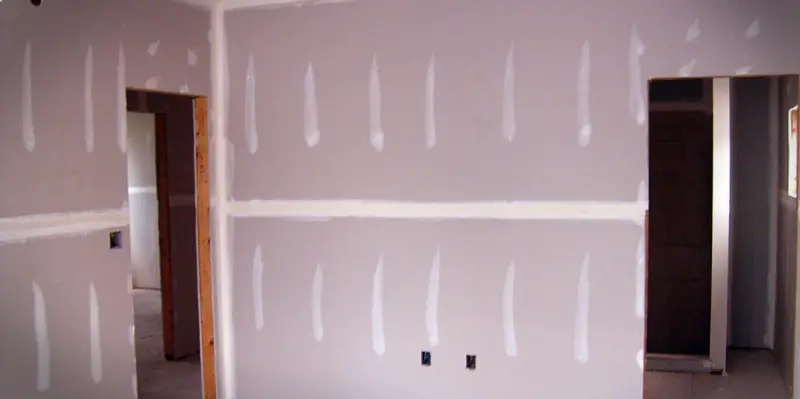Understanding the Taping and Mudding Process in Drywall

When doing drywall work in your home, you’ll find that the term ‘taped and mudded’ is often used regarding aesthetics and even fire protection codes and requirements. What exactly is mudding? What exactly is taping? After reading this, if someone should ask you, you can easily tell them the answer to “What does taped and mudded mean?”
What Does it Mean if a Wall is Taped and Mudded?
The terms taping and mudding sound kind of unpleasant, don't they? These tasks are part of the drywall finishing process. The process takes many steps, starting with the careful taping of all the joints where drywall sheets come together. At least a few layers of "mud" (drywall compound) must be applied, with drying/curing time and sanding in between.
The terms actually describe a process to make drywall smooth, safe, and fire resistant. The drywall or sheetrock itself can also be purchased with a specific fire resistance rating or layered to add extra fire resistance.
Taping Your Drywall
Applying drywall tape helps bond together adjacent sheets of drywall. Doing this creates continuity and helps reduce any motion or cracking. The joint compound can turn into powder if you neglect to apply tape to shore it up. In cases where excessive movement is expected, drywall mesh may be necessary, but is more expensive and more difficult to smooth out, so it's typically only used for potentially problematic areas.
When taping, you will need to take care to avoid tape bubbles. Use paper drywall tape with air-drying "mud", while self-sticking fiberglass tape works best with setting compounds ("mud" cured by chemical reaction rather than air-drying.)
Drywall Mudding
"Mud" is actually a drywall joint compound, used to strengthen and smooth drywall and drywall joints. You can use either dry or pre-mixed mud for your drywalling project. "All-purpose" mud works best for the base coat and lightweight "topping" mud is ideal for the final, finishing coat. The very first coat of mudding compound is basically the "glue" to hold down the joint tape that connects/seals together the sheets of drywall. Other coats of mud will smooth over the tape, nail holes, etc. You'll sand the mudded walls between coasts of mud.
After taping and mudding drywall, the last finishing steps include texturing (if desired) and painting.
Get Expert, Affordable Drywall Work in Your Local Area
All of Mr. Handyman's representatives are experienced drywallers! We'll do the job right so that your home or business location meets local fire codes and passes inspection. Request service from Mr. Handyman near you, or call us to get help in your home or business.
 Click to call
Click to call


